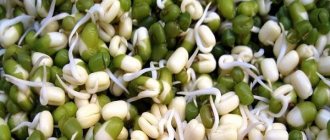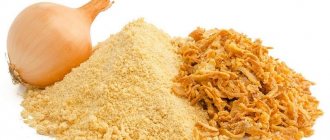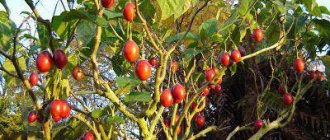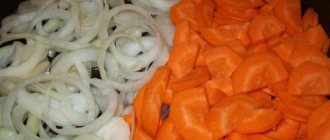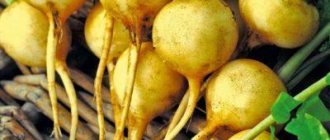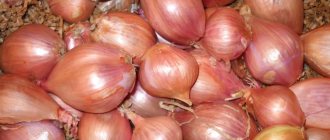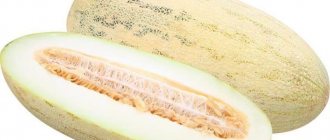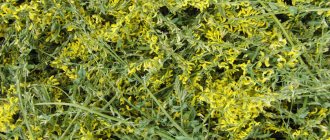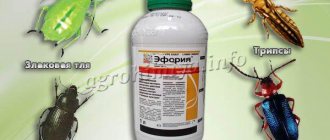Sprouted peas: benefits and harms
If peas collected from pods contain a lot of nutrients and vitamins important for the human body, then sprouted peas become a source of vital energy. Grains with sprouts should be consumed in order to:
- cleanse the body of toxins;
- rejuvenate skin cells;
- restore intestinal microflora;
- normalize blood sugar levels;
- reduce the amount of cholesterol in blood vessels.
Use natural products to prevent the development of heart and vascular diseases. They help stop the development of anemia.
To benefit from eating grains, you need to sprout peas at home.
Benefits for children
Eating pea seeds with sprouts will only benefit a child’s body. Indeed, in a sprouted product the content of vitamins K, D, A, C and group B is much higher than in other vegetables and fruits. This allows you to accelerate the growth and development of the baby. The sprouts of legume seeds accumulate easily soluble substances that are well absorbed by the child's body. Thanks to such food, the child will be strengthened and will be able to resist flu and colds during the transition period from winter to spring. But children under 12 years of age should use the product only after consulting with a pediatrician.
Benefits of sprouted peas for raw foodists
Those who have switched to a raw food diet need food rich in proteins. For them, the benefits of pea sprouts are obvious. Legume seeds make it possible to obtain amino acids necessary for the body's cells. The enzymes in sprouted peas are easily absorbed by the body and make the intestines work correctly. And vital energy will increase several times when pea grains with sprouts are included in the diet.
The beneficial properties of sprouts are combined with the spicy and slightly sweet taste of the product. They quickly become saturated, and the body receives the necessary proteins and carbohydrates in sufficient quantities.
The advantage of using grains with sprouts is that it is easy to sprout peas at home, and you do not have to buy from unknown producers. And if you grow a vegetable on your own plot, the benefits of the product will only increase.
Benefits for men and women
For an adult, it is imperative to eat the sprouts of vegetable grains, because they will become sources of:
- vitamins;
- squirrel;
- amino acids that are easily absorbed by the body;
- potassium and calcium;
- magnesium and phosphorus.
See also
How to properly plant peas in a greenhouse and open ground
Read
For a woman, including garden plant seed sprouts in the menu will improve the condition of her hair and skin. The composition of legumes is important for the health of a pregnant woman. Such nutrition allows you to soften the course of toxicosis and saturate the nursing mother’s body with proteins. Eating sprouts from vegetable seeds will strengthen the immune system and help the body resist colds.
For men, sprouted peas contain enough zinc, which is necessary for the normal functioning of the prostate gland. Pea sprouts will saturate the tissue cells of the genitourinary system with glycine, lysine, cystine, alanine and other important amino acids. The health of important male organs, the heart and blood vessels, directly depends on them.
Harm to health, contraindications
The benefits that sprouted peas bring to the human body are obvious, but the harm from the product for some people can also be considerable. If there are problems with the large intestine, in which foci of inflammation have arisen, then you should not eat vegetable sprouts.
They are contraindicated in patients with:
- acute form of gastritis;
- nephritis;
- gout and urolithiasis due to the large amount of purine compounds in sprouts;
- stomach and duodenal ulcers.
A large amount of fiber causes discomfort in the digestive tract. Sprouts are poorly digested by older people and young children. Together with dairy products, peas cause excessive gas formation in the intestines. This is harmful to health, and the use of peas with sprouts should be limited or completely abandoned.
Norms and rules of use
Adding pea sprouts to the diet, the benefits and harms of which are separated by a thin line, should be done with caution. “More is not better”, in this case this principle also works.
Read also Vibrating potato digger for Neva walk-behind tractor
Consumption rates for sprouted peas:
| Period of time | Daily consumption rate |
| First portion | 1 tsp. |
| After 7 days of regular consumption | 1 tbsp. l. |
| After 30 days | 30 g |
| After 2-3 months | 70 g |
Calories and nutritional value
Live food made from sprouted products is useful, as it gives part of its energy to a person, replenishing reserves:
- protein;
- antioxidants;
- pectin;
- polysaccharides;
- amino acids.
The sprouts accumulate a large number of water-soluble enzymes, which help fully absorb the nutrients from the juicy peas. Biopolymers split into parts with a low molecular weight composition.
Thanks to sprouts, the nutritional value of the vegetable product increases, which is not deposited as a burden, but is easily digested by the body.
The calorie content of a product with sprouts of 4-5 millimeters is 120-170 kcal per 100 grams. But this takes into account the fact that they were able to properly prepare it for germination. Then the body will receive up to 27 grams of carbohydrates and 9 grams of proteins. Just 100 grams of grains per day will replenish the supply of vitamins P and A by 15%.
Sprouts May Help Control Blood Sugar Levels
Sprouts can also help you control your blood sugar levels. Some research suggests that this may be partly because the total amount of carbohydrates in the sprouts appears to decrease during sprouting. However, not all studies are consistent.
Another theory is that sprouts may have an increased ability to regulate the activity of the enzyme amylase, which is used by the body to properly break down and digest sugars.
Scientists in one study studied a small group of people with type 2 diabetes. Half of the subjects ate 60 grams of lentil sprouts per day in addition to their normal diets, while the other group simply stuck to their regular diet.
By the end of the eight-week study, those who ate the sprouts had a 10% reduction in hemoglobin A1c levels, a marker of blood sugar control. On the other hand, in the control group there was an increase in the level of this hemoglobin by 12%.
In another study, people with type 2 diabetes consumed a powdered broccoli sprout supplement for eight weeks, which resulted in lower blood insulin levels and improved insulin resistance.
The authors attributed these improvements to the large amounts of the antioxidant sulforaphane in the supplement.
Despite these encouraging results, it is worth noting that there appears to be little research on this topic. More research is needed before strong conclusions can be drawn.
Read also: How to properly care for Achatina snails
Sprouts may help people with type 2 diabetes better control their blood sugar levels. However, more research is needed to determine why this is the case and whether these results apply to people without diabetes.
How to sprout peas for food: instructions
Peas must be discarded before germination. To do this, they are soaked in water, and those that float are removed. Both yellow and green products are suitable for nutrition.
First, soak it by filling it with water in a saucepan or bowl. Water should exceed the volume of peas by 1.5 times. After 10-12 hours, the water is drained and the peas are washed. Then the damp cloth is placed on a saucer and the prepared vegetable product is laid out on it. Cover the top with gauze or a cotton napkin soaked in water.
Germinating peas require warmth and constant moisture from the fabric. But it is not recommended to place the product in direct sunlight. A large amount of moisture will cause the peas to rot. If the conditions are suitable for the grains, then within a day whitish sprouts 1-3 millimeters long will appear. To be eaten, the height of the sprouts should reach 3-4 millimeters, then their value will increase.
See also
Beneficial properties and harm of peas for the male and female body and recipes for the treatment of diseases
Read
You need to cook as much product as you can eat at one time. There is no need to stock up on them. If stored, then in the refrigerator, but no more than 5 days. Before use and daily, the sprouts are washed using clean running water. You can plant peas in open ground. Then they will get a harvest of green fresh vegetables. The procedure should be carried out in the spring, when the soil warms up to 10 degrees Celsius.
Germinating peas for planting in open ground
Much depends on the conditions in which the peas will grow, but the most important thing is the correct selection and preparation of planting material for the upcoming planting in open soil. Proper selection of seeds will provide the necessary conditions for obtaining a rich and high-quality harvest. In addition, the procedure allows you to speed up and simplify the germination process.
Important! The seed material must be sorted manually, removing all damaged and non-standard specimens.
Before you start germinating legumes, you need to find out how to properly soak the seed material. This is extremely important for the successful cultivation of the plant.
Discussions about whether it is necessary to germinate pea seeds before planting in the ground do not make much sense. Despite the existence of an alternative opinion, most experienced gardeners carry out this procedure in the spring without hesitation.
Sprouted peas: uses for healthy food
If you have germinated pea seeds, then the main thing is to eat the sprouts correctly. There are several rules for using live food in the diet:
- Sprouted peas are best served for breakfast. Start with a few pieces, increasing the amount gradually and bringing it to 80-100 grams. It is advised to take a break from using the product.
- Grind peas in a blender, make casseroles, cook porridge, add them as a filling to pies.
- There are many recipes for salads with sprouted vegetables. It is combined with cucumber, radish, tomato, onion, garlic, and vegetable oil.
- A very tasty paste made from pea sprouts, zucchini, garlic, seasoned with sesame seeds, lemon juice and olive oil.
- Juice is also prepared from pea sprouts.
You can come up with dishes with a living product yourself, then it will bring pleasure and benefit to the body.
How can you germinate peas yourself?
Traditionally, it is absolutely not difficult to obtain pea sprouts at home. Typically this process takes about 1.5 days. To do this you just need:
- Rinse dried peas.
- Place it in a deep bowl or plate.
- Cover with gauze and pour water at room temperature over it. Moreover, the volume of water should be twice as large as the grains.
- The grains that are flooded with water should be sent to a warm place for 12 hours, but not in the sun.
- Then the grains must be washed and put back on the plate, covered with gauze. Leave for 20-24 hours, remembering to wash the peas every 4 hours.
- Sprouts from 2 to 5 mm are considered ready.
- They can be stored in the refrigerator for up to five days. At the same time, they should be kept in a tightly closed container under a damp cloth, periodically washing the grains from the mucus that appears.
- Immediately before use, pea sprouts should be blanched.
I found a useful video on u-tube that will help you understand the germination process.
Sprouted peas for weight loss
The basis of losing weight is the process of removing excess fluid from the body, freeing the intestines from waste and toxins accumulated there. Therefore, overweight people need to start growing peas. And after germination, you can gradually include a healthy low-calorie product in the menu when there is no need for the planting procedure.
It will help you feel full quickly and will not give your body a lot of calories. And in order to provide yourself with living organic food, you need to find a use for delicious sprouts in cooking. A variety of pea dishes will help make the weight loss process enjoyable. But before you sprout peas for your diet, you should consult your doctor. If there are no contraindications, then sprouted legumes will become a favorite product for the whole family.
Seed selection and preparation
Before a set of procedures for germinating peas, it is necessary to select seed material. Typically, it consists of three stages:
- Selection of peas by size.
- Rejection of peas based on external signs.
- Rejection by density.
It all starts with choosing a batch of peas by size. Here you need to follow a simple rule: they should be more or less the same in size, and their diameter should be within 5-8 mm. It is not worth using smaller peas, since most likely they did not receive the required amount of nutrients, and the energy reserve may not be enough to grow a strong and healthy plant from the embryo.
Too large a pea size is also undesirable, since it can indicate either a plant disease or that the pea was actively (and most likely in vain) fertilized. Despite the fact that legumes enrich the soil with nitrogen and are green manure for many crops, they also require a certain amount of fertilizing. Usually their application rates are quite small (for example, for superphosphate for peas, the dose is no more than 15 g per 1 sq. m, while for other plants it is 2-3 times higher). But some gardeners, trying to speed up the ripening of peas, may not comply with such standards.
After the batch is selected, individual selection of seeds for germination begins. In this case, the following copies are rejected:
- having too little or, conversely, too much weight;
- beans with signs of disease (fungus, black spots, rot, mosaic manifestations, etc.);
- beans damaged by insects or other pests;
- peas with voids;
- peas with a damaged protective layer.
The final culling of peas is carried out using a saline solution. To make it you need 1 liter of warm water and 30 g of salt. The salt is dissolved in water and the peas are immersed in it. After about 3-5 minutes, the bad peas will float to the surface, and the good ones will settle to the bottom.
At this point, the procedure for selecting seeds for soaking peas can be considered complete. The germination rate of seeds selected in this way is 85-90%.
Conditions for growing peas
Lighting
It is necessary to grow this crop at home on the brightest balcony, as peas love good lighting.
Temperature
The plant is not afraid of cold weather, and is very unpretentious in care, so growing it at home will not be particularly difficult.
Peas tolerate low temperatures down to -5 degrees, so even on an unglazed balcony it will bring good results. Although at the initial stage it is better to grow peas on the windowsill.
Capacity
A flower pot is not suitable as a planting container for peas. It is best to take an oblong box made of wood or plastic to grow a plant at home. There should be holes at the bottom of the container to drain excess moisture.
Watering
Peas should be watered as the surface layer of the soil mixture dries. Watering compacts the top layer of soil, and this crop requires maximum air penetration to the root system. Therefore, after each application of water, it is advisable to loosen the soil. This procedure will allow you to grow a good harvest of beans at home.
